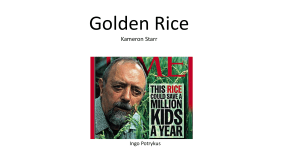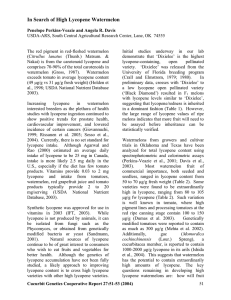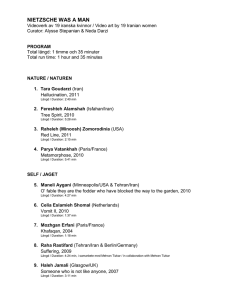comparison of spectrophotometric and hplc methods for the
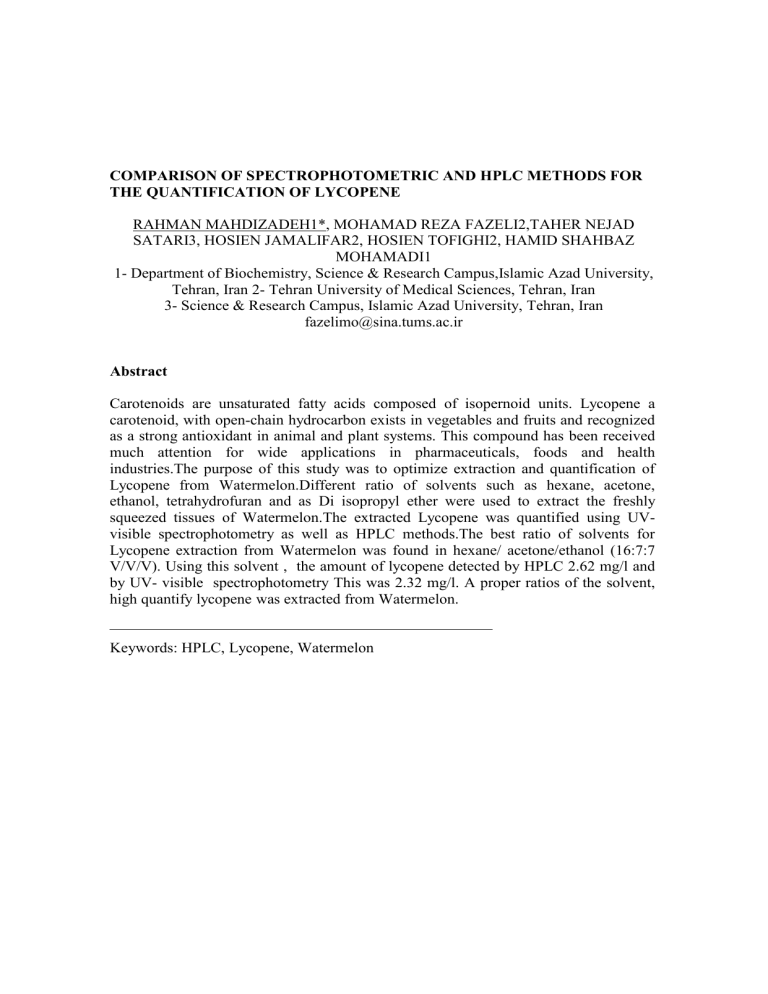
COMPARISON OF SPECTROPHOTOMETRIC AND HPLC METHODS FOR
THE QUANTIFICATION OF LYCOPENE
RAHMAN MAHDIZADEH1*, MOHAMAD REZA FAZELI2,TAHER NEJAD
SATARI3, HOSIEN JAMALIFAR2, HOSIEN TOFIGHI2, HAMID SHAHBAZ
MOHAMADI1
1- Department of Biochemistry, Science & Research Campus,Islamic Azad University,
Tehran, Iran 2- Tehran University of Medical Sciences, Tehran, Iran
3- Science & Research Campus, Islamic Azad University, Tehran, Iran fazelimo@sina.tums.ac.ir
Abstract
Carotenoids are unsaturated fatty acids composed of isopernoid units. Lycopene a carotenoid, with open-chain hydrocarbon exists in vegetables and fruits and recognized as a strong antioxidant in animal and plant systems. This compound has been received much attention for wide applications in pharmaceuticals, foods and health industries.The purpose of this study was to optimize extraction and quantification of
Lycopene from Watermelon.Different ratio of solvents such as hexane, acetone, ethanol, tetrahydrofuran and as Di isopropyl ether were used to extract the freshly squeezed tissues of Watermelon.The extracted Lycopene was quantified using UV- visible spectrophotometry as well as HPLC methods.The best ratio of solvents for
Lycopene extraction from Watermelon was found in hexane/ acetone/ethanol (16:7:7
V/V/V). Using this solvent , the amount of lycopene detected by HPLC 2.62 mg/l and by UV- visible spectrophotometry This was 2.32 mg/l. A proper ratios of the solvent, high quantify lycopene was extracted from Watermelon.
Keywords: HPLC, Lycopene, Watermelon
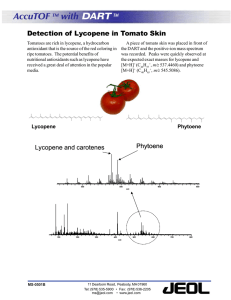
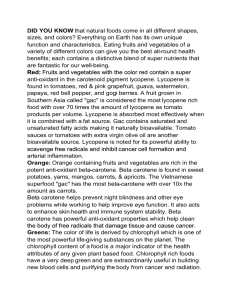
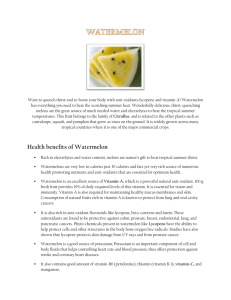
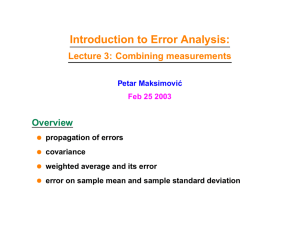
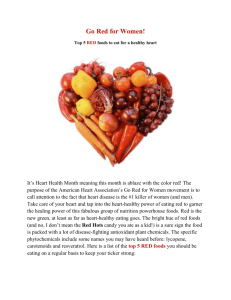
![Amir Shams [ card ] 02](http://s2.studylib.net/store/data/005340099_1-e713f7ae67edd60d4c53ae5bb9448166-300x300.png)

